Field-Cutting a Rope
Usually, if you have to field cut a high performance rope type (e.g. Python®, DoPar®, etc.), you do not need to re-cut a wire rope. However, you may encounter situations where it becomes necessary to shorten the rope. (But remember the old rule: 3 times cut and still too short.)
In cutting any wire rope special care MUST be taken in seizing the rope end.
Two methods are suggested:
1) Seizing the rope end with soft iron wire
2) Seizing the rope end with hose clamps
After cutting the rope it is good practice to braze or weld the rope ends to ensure that they don’t unravel. Leave the seizing on the rope for added holding strength. Be careful not to damage the seizing while brazing.
Cutting a rope with a torch may result in both uneven ends and damage to the seizing causing the strands to open up.
Rope diameter up to 14mm (9/16″) may be cut with a FELCO C16 hand cutter.
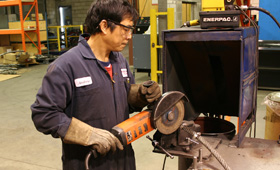 |
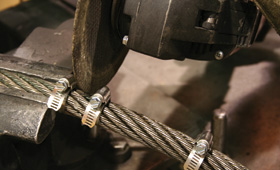 |
| Attach 3 hose clamps on either side of the rope and clamp it securely in a vise. The distance between the first and second clamp should be about 3 rope diameters. Attach a 3rd clamp about 2 rope lays (12-14 rope diameters) away from the 2nd. Wear protective gloves and eye glasses.
After attaching 3 hose clamps on either side of the cut mark, blade cut the rope. |
|
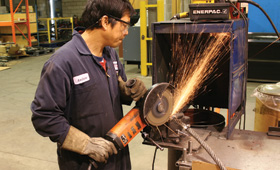 |
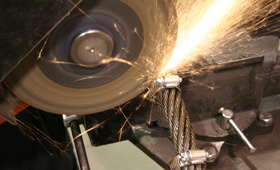 |
| Do not use a grinding wheel but a steel cutting blade; e.g. Elastic #80EHT230-2. Cut swiftly through the rope and have another person hold and secure it. | |
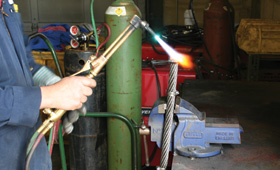 |
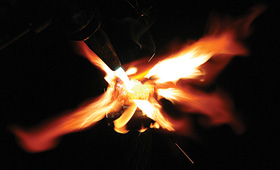 |
| After blade cutting, mount upright. Do not use the cutting nozzle of your torch but attach a small tip. | Carefully melt and fuse together all individual wires. |
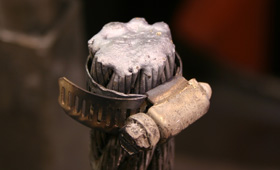 |
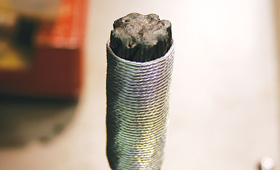 |
| Properly fused wire rope end. If the hose clamps were not damaged during the fusing procedure, they shall be left attached to the rope. | If those clamps got damaged or are too bulky for the installation, you need to replace all 3 of the with a wire seizing. |



